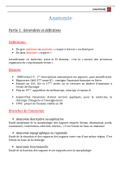written by
Killey
The Marketplace to Buy and Sell your Study Material
At Stuvia, you will find the best notes, summaries, flashcards & other study material. Search for your
school or uni and find the study material you need.
www.stuvia.com
Downloaded by: Killey | Want to earn $1.236
Distribution of this document is illegal extra per year?
, Stuvia.com - The Marketplace to Buy and Sell your Study Material
ATI TEAS 7 READING 2022
• Read the passage below before answering the question.
❖ Given the media coverage surrounding climate change, most people are aware of this
environmental issue. One that is less well known but may become just as crucial is "peak oil." What is
peak oil? Simply put, it is the point at which the world production of oil reaches its highest point and
begins a steady, irreversible decline. This has been known for some time. Hubbert's Curve (1956),
named for the scientist who formulated it, predicted that U.S. production would peak around 1970. He
was off by 1 year. Since 1971-2, the oil production of the United States has been gradually declining.
Stimulus Question #: 1 of 3
1. Which of the following best describes the author's purpose in the first two sentences of the
passage?
To introduce the subject matter by presenting a similar issue.
Readers might not be familiar with peak oil, so the author compares it to an environmental
issue with which readers will be familiar. This is a method of engaging readers' interest.
• Read the passage below before answering the question.
❖ Given the media coverage surrounding climate change, most people are aware of this
environmental issue. One that is less well known but may become just as crucial is "peak oil."
What is peak oil? Simply put, it is the point at which the world production of oil reaches its
highest point and begins a steady, irreversible decline. This has been known for some time.
Hubbert's Curve (1956), named for the scientist who formulated it, predicted that U.S.
production would peak around 1970. He was off by 1 year. Since 1971-2, the oil production of
the United States has been gradually declining.
Stimulus Question #: 2 of 3
2. Which of the following words would the author use to describe the issue of peak oil?
Significant
In the passage, the author compares peak oil to the widely discussed issue of climate change.
The passage also states the effects of peak oil as they began in 1971 to 1972. Both the
relevance and immediacy of the issue of peak oil indicate the author's view of peak oil as a
significant environmental issue.
Downloaded by: Killey | Want to earn $1.236
Distribution of this document is illegal extra per year?
, Stuvia.com - The Marketplace to Buy and Sell your Study Material
• Read the passage below before answering the question.
❖ Given the media coverage surrounding climate change, most people are aware of this
environmental issue. One that is less well known but may become just as crucial is "peak oil."
What is peak oil? Simply put, it is the point at which the world production of oil reaches its
highest point and begins a steady, irreversible decline. This has been known for some time.
Hubbert's Curve (1956), named for the scientist who formulated it, predicted that U.S.
production would peak around 1970. He was off by 1 year. Since 1971-2, the oil production of
the United States has been gradually declining.
Stimulus Question #: 3 of 3
3. Which of the following statements best describes the argument made in this passage?
Peak oil is an important issue even if it is not well known.
The passage discusses the comparative lack of general public awareness of the issue of peak
oil. It goes on to provide information about reaching and passing the point of peak oil.
• Read the passage below before answering the question
❖ The Nearings
Among those who subscribe to self-sufficiency and moving back to the land, Helen and Scott
Nearing are a legendary couple. Together, the Nearings exemplified the notion of the good life
by living simply in a rural setting.
Scott (1883-1983) came from a wealthy Pennsylvania coal mining family, and Helen Knothe
Nearing (1904-1995) was the daughter of an intellectual Ridgewood, New Jersey family.
Together they would travel a path very far away from their rather conventional beginnings. By
the time he was in his early 20s, Scott had taken to social activism, speaking out against the
unsafe working conditions in the Pennsylvania coal mines. Helen spent a brief period working
in a factory before meeting Scott and leaving behind the creature comforts of her former
lifestyle.
The two met first in 1921 and again in 1928, and were together from that point. In 1932, they
left New York City for rural southern Vermont, where they developed a self-sufficient lifestyle
and philosophy. They divided their waking hours into three 4-hour blocks: "bread labor," which
was work for food, shelter, fuel, etc.; civic work, such as community service; and recreational or
professional pursuits, economics research for Scott and music for Helen. Until 1952, their bread
labor in Vermont was primarily maple products; after 1952, when they moved to Maine, it was
Downloaded by: Killey | Want to earn $1.236
Distribution of this document is illegal extra per year?










